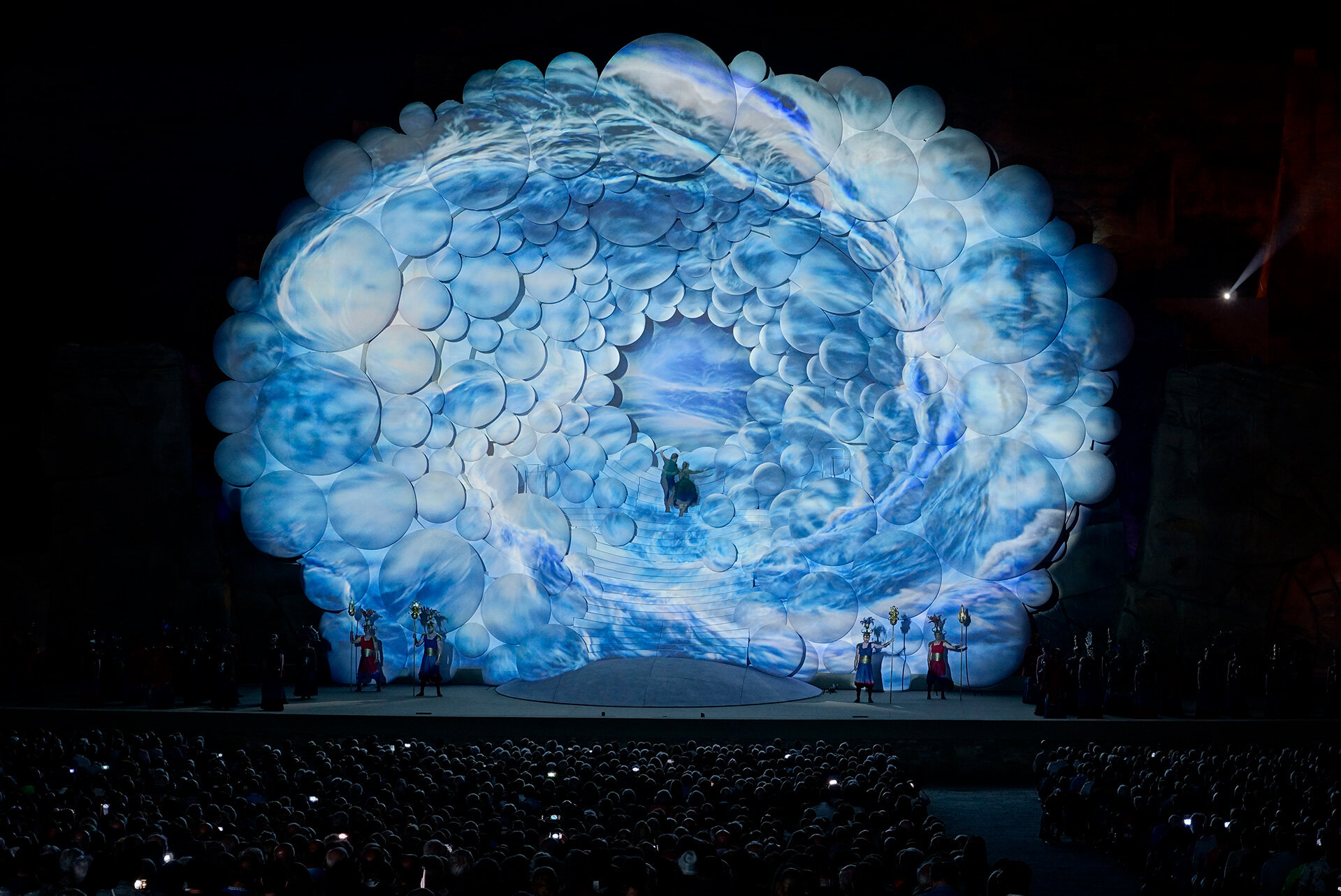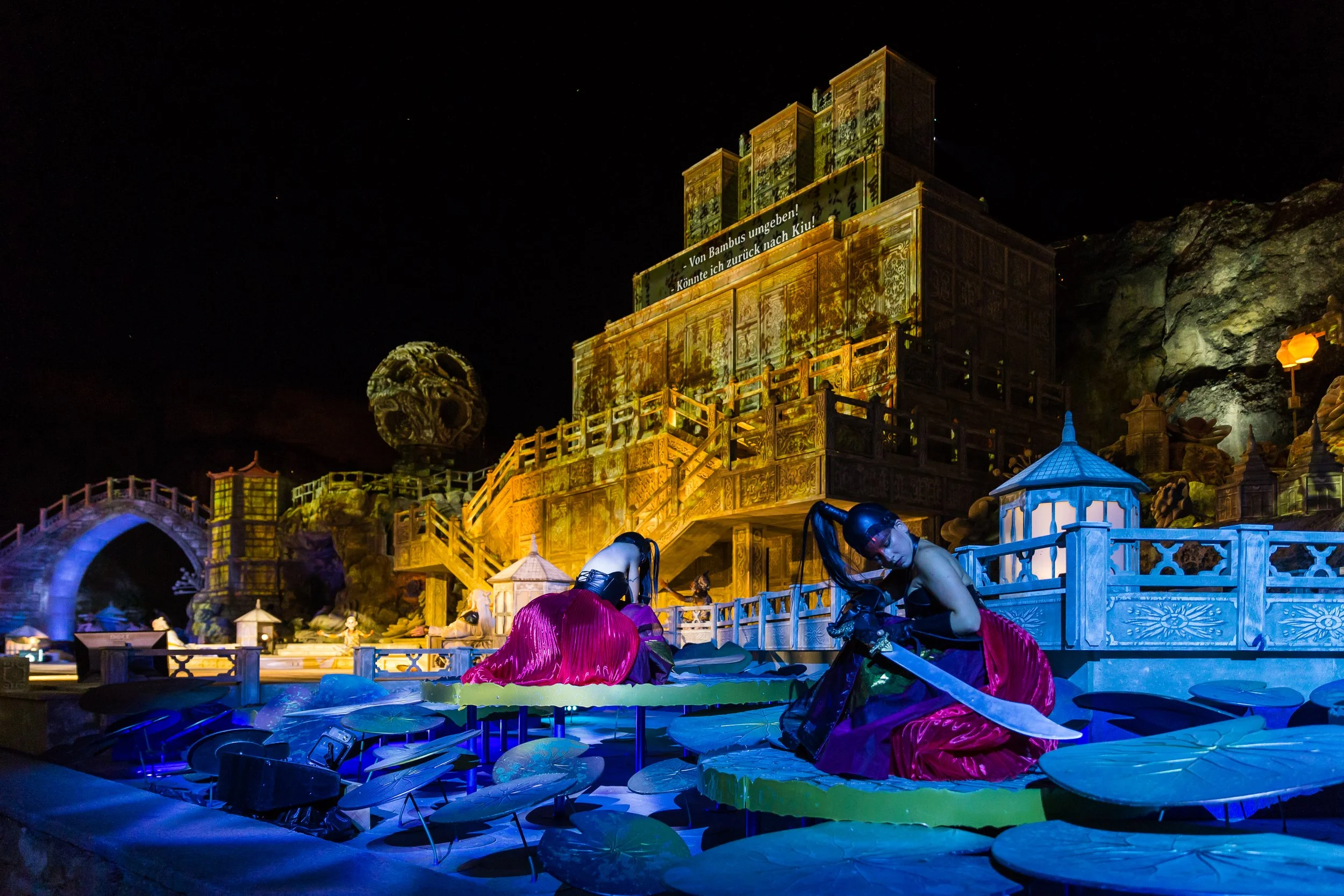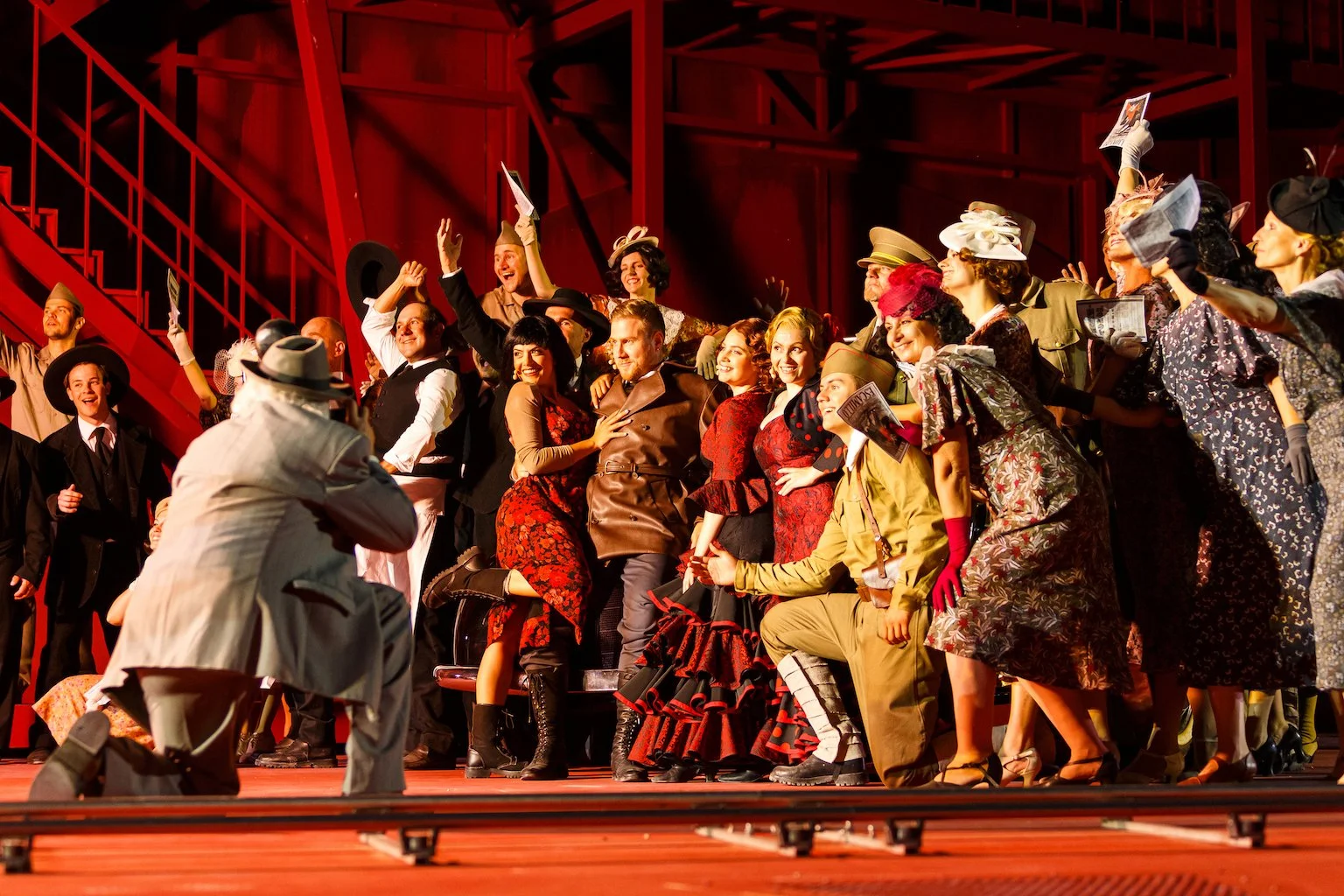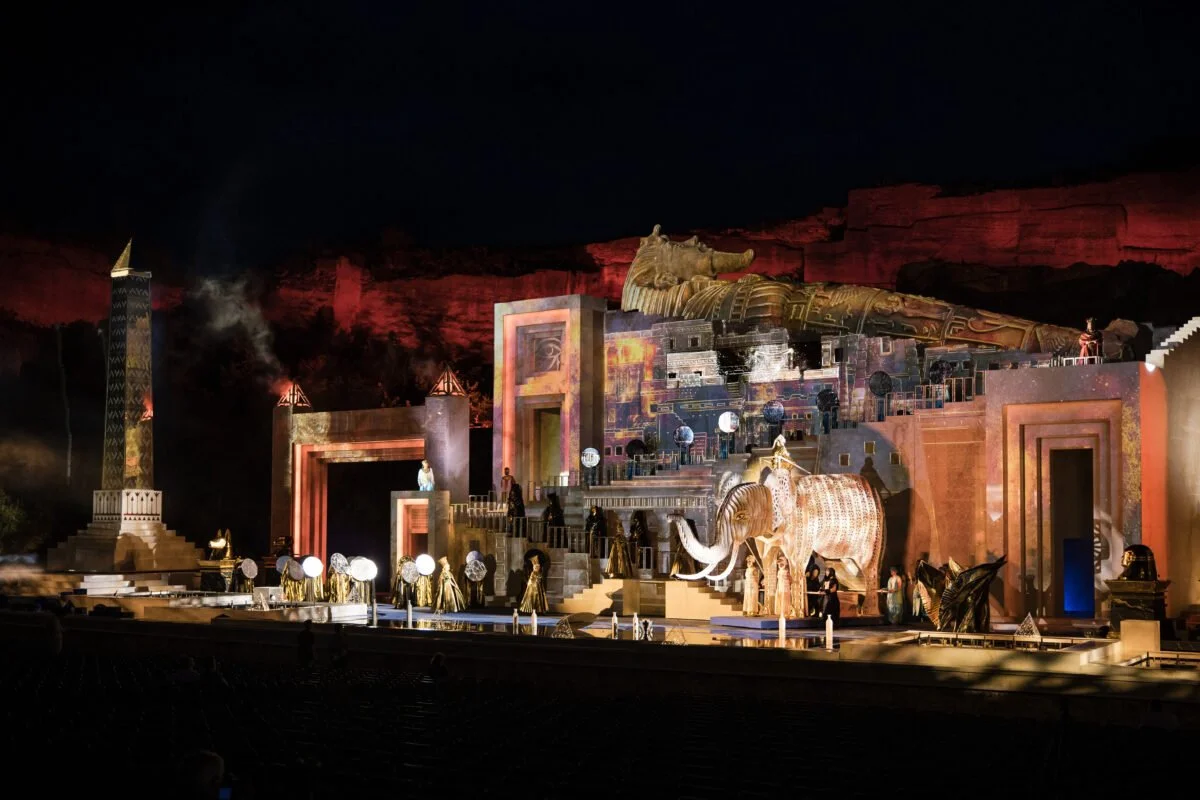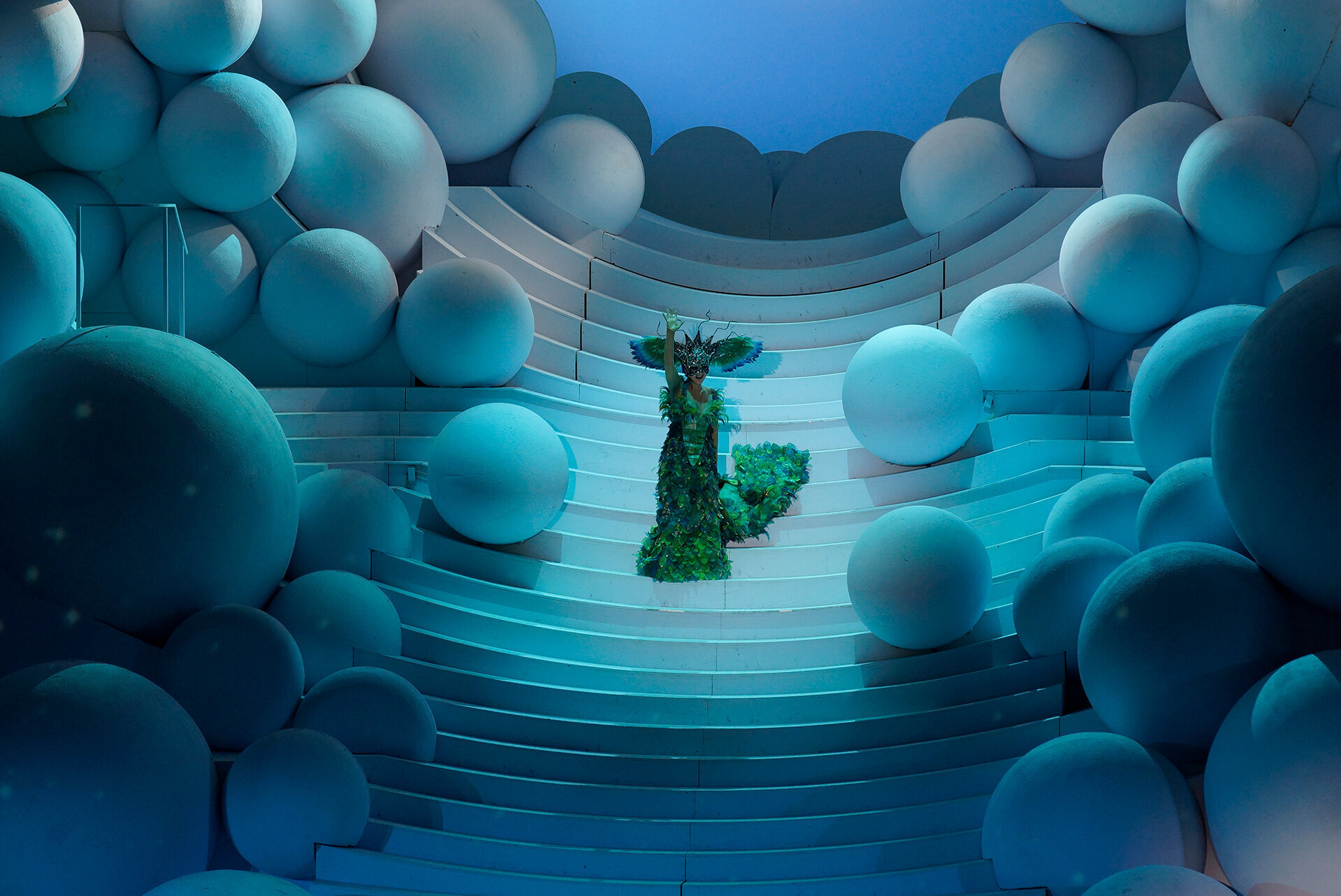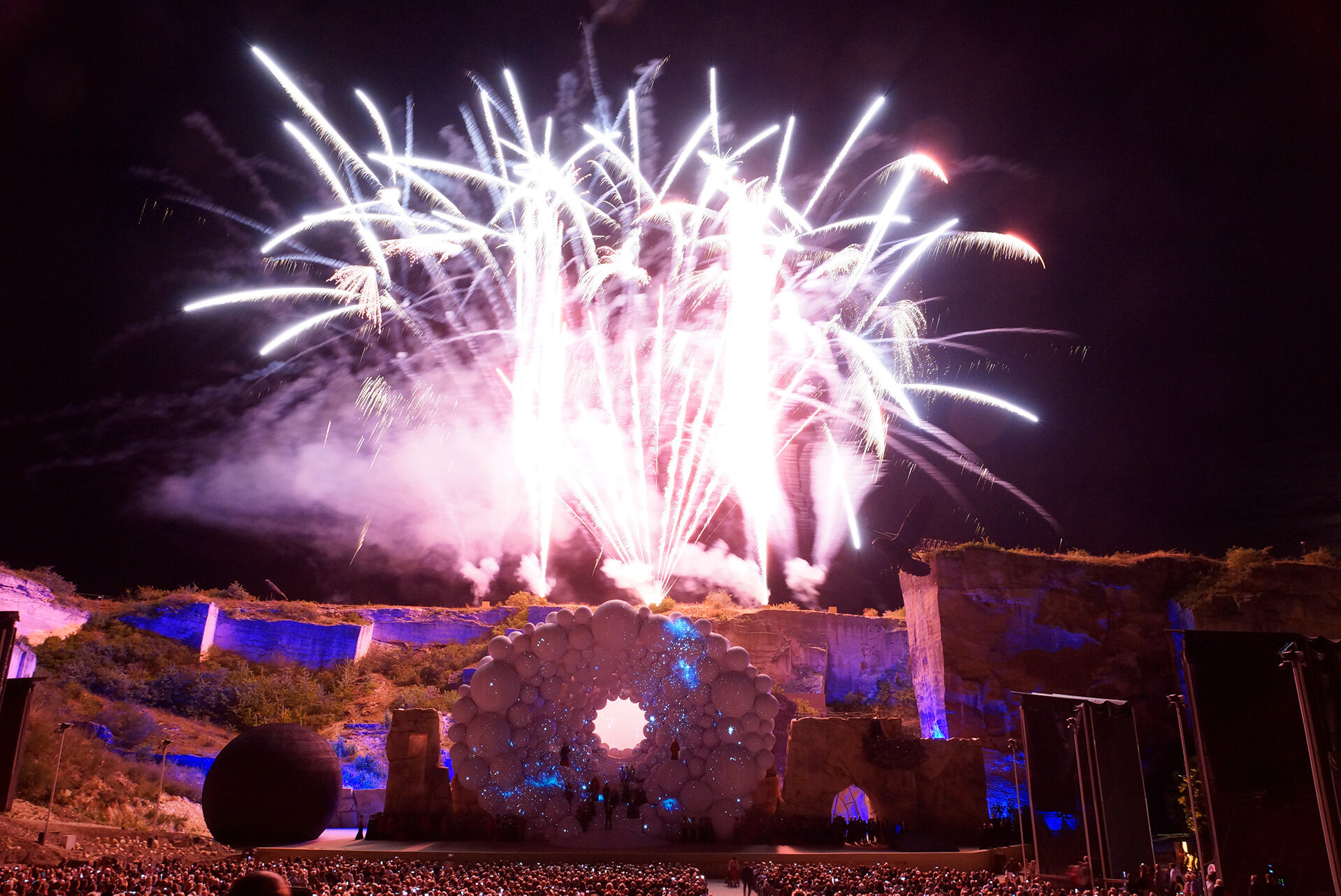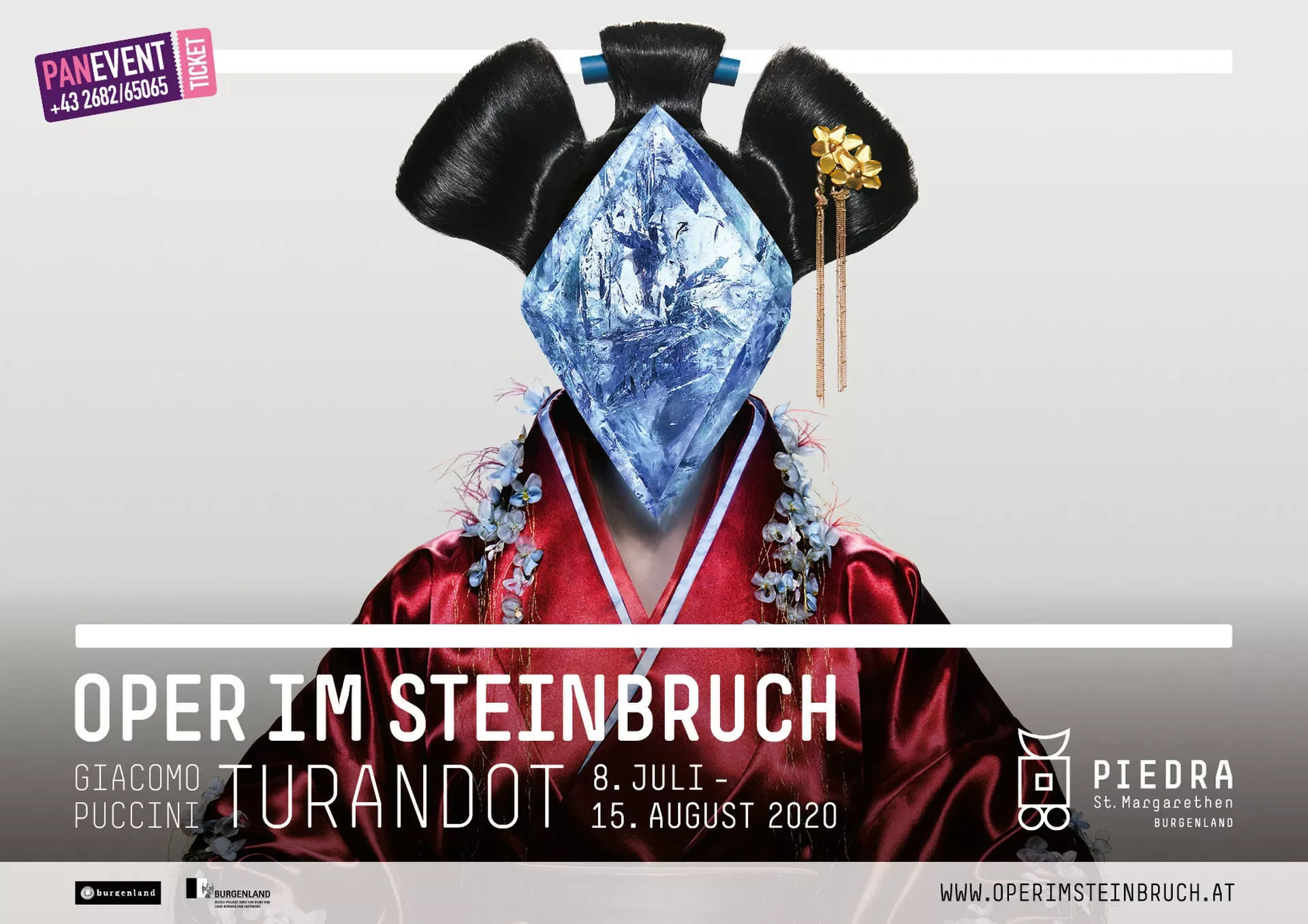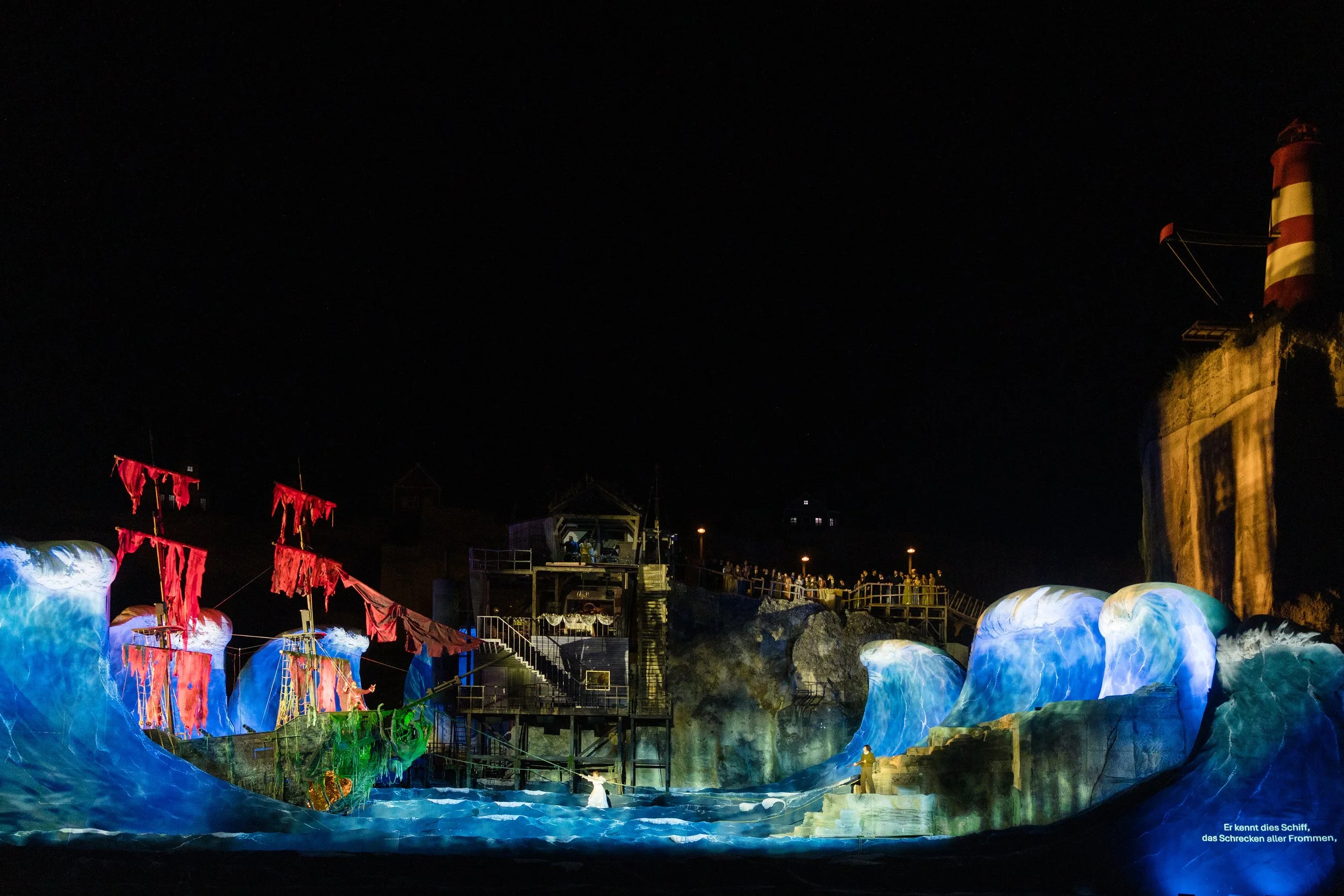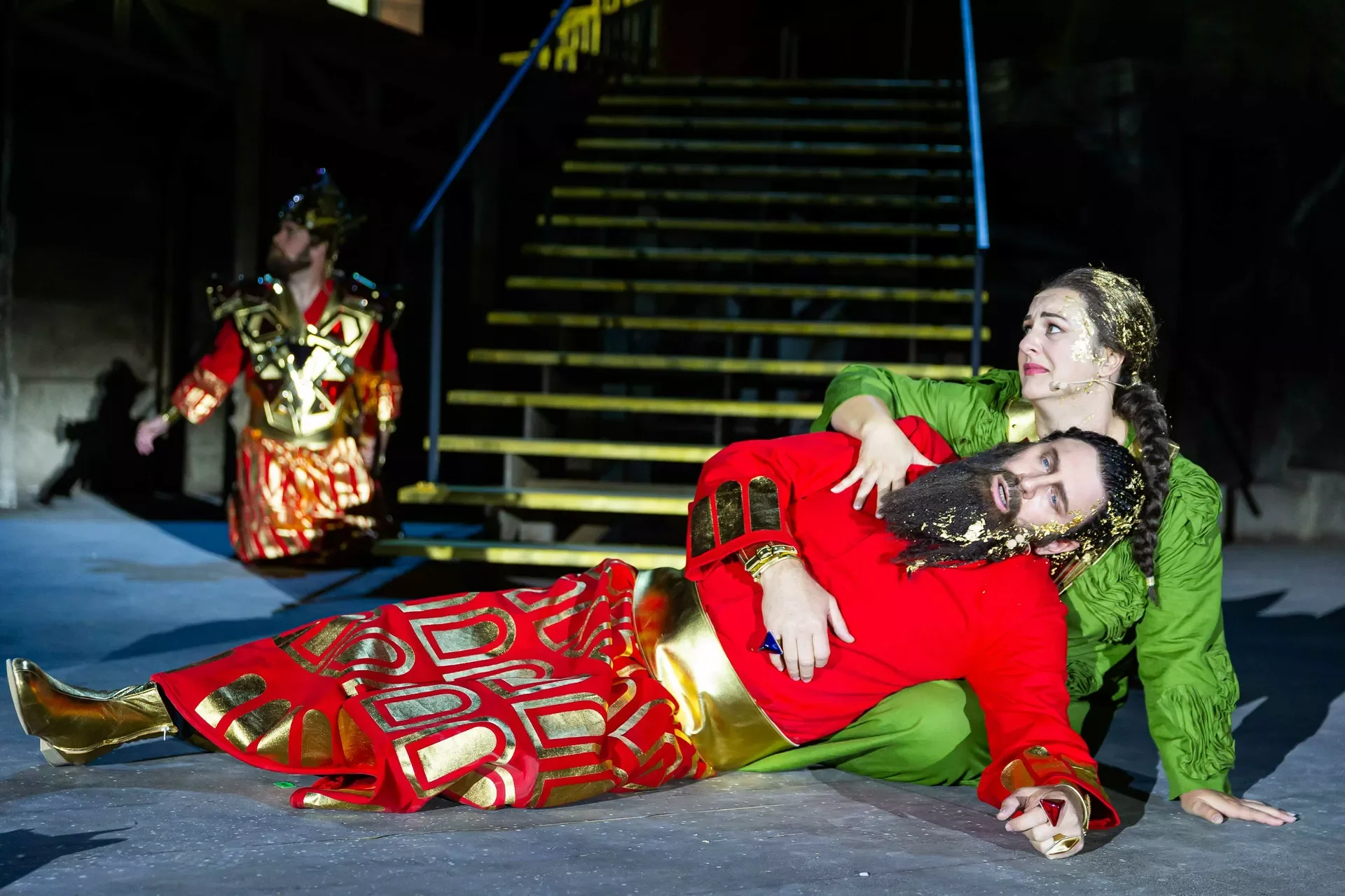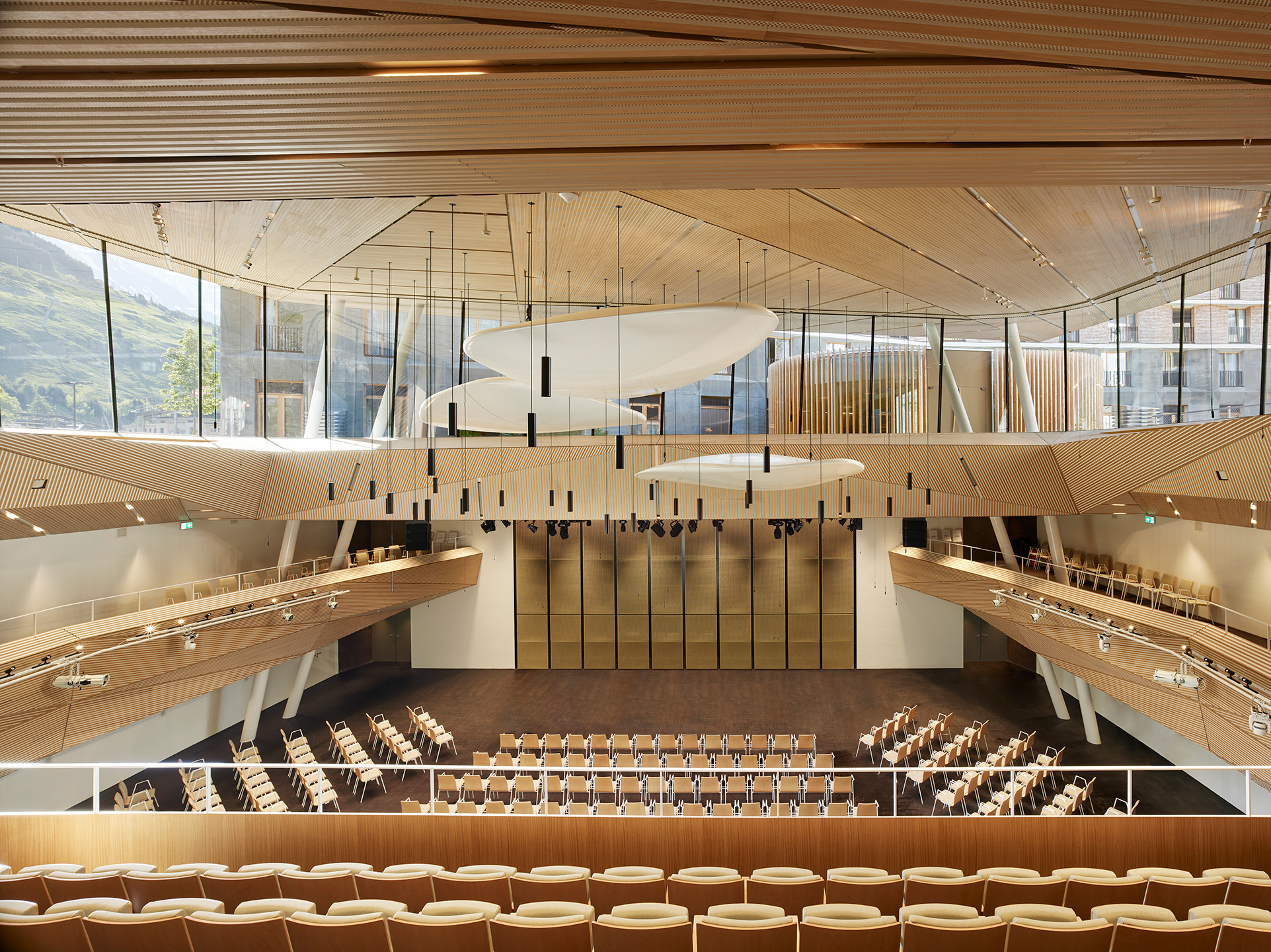OPERA IN THE QUARRY
Amadeus Acoustics & Europe’s Largest Natural Stage
Tucked into the dramatic limestone landscape near Lake Neusiedl, the St. Margarethen Quarry is not only a UNESCO World Heritage Cultural Landscape, it's also Europe’s largest open-air opera venue. Every summer, this awe-inspiring location becomes the home of epic opera productions. But open-air opera comes with acoustical challenges: wind, distance, and unpredictable reflections from the quarry walls.
That’s where Amadeus Acoustics comes in.
Since 2019, Amadeus has been the trusted acoustic partner of Oper im Steinbruch, transforming this rugged open-air arena into a rich, immersive sound environment. Using more than 100 loudspeakers, Amadeus creates a virtual opera house around the audience, without a single wall. In collaboration with Timax Real-time tracking, every single virtual reflection is time-aligned to the singers position.
Below, we take you behind the scenes of each season to show how Amadeus helped bring magic, drama, and thunder to life, one opera at a time.
Photo: Oper im Steinbruch
2019: The Magic Flute (Mozart)
Our journey with Oper im Steinbruch began with a production as magical as the quarry itself": Mozart’s The Magic Flute. Known for its whimsical characters and fantastical soundscape, this opera was the perfect debut for our active acoustic technology. Amadeus created an immersive environment where sound could travel seamlessly with the performers across the 7,000m² stage. Papageno’s birds fluttered audibly through the air, thunder cracked across the open sky, and mystical cave effects wrapped around the audience.
The results were extraordinary: over 91,000 visitors attended the production, with a remarkable 93% occupancy rate. But beyond the numbers, it was a moment of proof. We showed that immersive, high-fidelity acoustics could elevate even the most technically demanding opera in an open-air setting, transforming the quarry into a fantastical sound world where the audience could not only watch the story unfold but hear it breathe.
Photo: Oper im Steinbruch ©️ Jerzy Bin
2021: Turandot (Puccini)
After a year’s pause in 2020, Oper im Steinbruch returned with renewed ambition and a colossal production of Puccini’s Turandot. With its icy princess, exotic harmonies, and rousing choruses, Turandot is both emotionally intricate and sonically immense. Staging it in the quarry meant finding a way to preserve the opera’s intimacy while unleashing its dramatic force. Amadeus developed a bespoke acoustic environment that highlighted every nuance of Puccini’s lush orchestration while allowing even the softest vocal phrases to resonate clearly in the vast outdoor space.
To enhance the storytelling, we used spatial audio processing to transport the audience into ancient China, creating distinct sonic atmospheres for each setting, from royal courtyards to dreamlike moments of introspection. Our system adapted in real time, balancing the bold orchestral passages with tender solos and layered ensembles. The result was a production that felt both monumental and unexpectedly delicate, revealing new depths in one of opera’s most spectacular scores.
Photo: Oper im Steinbruch ©️ Jerzy Bin
2022: Nabucco (Verdi)
When Verdi’s Nabucco arrived in 2022, it brought with it biblical storms, palace intrigues, and one of the most beloved choral works in opera history: “Va, pensiero.” For this production, Amadeus set out to create a unique acoustic that connected the visual image of the impressive scenery with the weight and grandeur of Verdi’s music, without sacrificing clarity. The Amadeus active acoustics system created a setting that complemented the visual impression, while recreating the acoustic qualities of a theatre fitting to the score, a feat that gave the audience a sense of being enveloped in a sacred space, despite sitting under the stars.
The chorus became the heart of the experience. Thanks to precise speaker placement and real-time vocal tracking, every line, whether whispered or shouted, arrived with intention. The echo of enslaved voices, the thunder of divine wrath, and the tender laments of exiled people were not just heard, but felt. The quarry became a sonic temple, resonating with emotion and power.
Photo: Oper im Steinbruch ©️ Jerzy Bin
2023: Carmen (Bizet)
Bizet’s Carmen was a thrilling change of pace. With its sensual rhythms, fiery characters, and abrupt shifts in mood, it demanded an acoustic approach that was agile, responsive, and alive. Amadeus focused on capturing the raw energy of the drama, adapting the system in real time to follow Carmen’s world, from bustling public squares to hushed, intimate encounters. Scene-based presets allowed the soundscape to evolve alongside the action, immersing the audience in the heat and pulse of every moment.
Whether it was the shimmer of castanets echoing through the quarry or the low tension of Don José’s inner conflict, every sonic detail was tuned for dramatic impact. The singers moved freely across the stage, their voices always anchored, always connected. The final scene, where fate overtakes passion, hit with visceral weight: a collision of sound, silence, and story. It was opera as lived experience, not just performance.
Photo: Oper im Steinbruch ©️ Jerzy Bin
2024: Aida (Verdi)
Few operas ask for more grandeur than Aida, and few venues deliver it as naturally as the St. Margarethen Quarry. In this sweeping tale of love, loyalty, and empire, the Amadeus system was tasked with nothing less than making ancient Egypt rise again in sound. We crafted an immersive acoustic environment where every trumpet fanfare, choral swell, and mournful aria had space to breathe. The triumphal marches rang out like ceremonial processions, while private moments between lovers echoed with delicate poignancy.
To achieve this, we layered spatial zones within the mix, giving separate acoustic “homes” to the soloists, chorus, and orchestra. This allowed us to maintain clarity even in the opera’s most crowded musical passages. The result was both majestic and moving: a sound world where the epic and the intimate coexisted, drawing the audience ever deeper into Verdi’s emotional landscape.
Photo: Oper im Steinbruch ©️ wearegiving
2025: The Flying Dutchman (Wagner)
This summer’s production of Wagner’s The Flying Dutchman marks a new high point in our collaboration with Oper im Steinbruch. Known for its sweeping orchestration, supernatural themes, and maritime drama, Wagner’s score demands a sound world that is both expansive and eerily intimate. In the vast open space of the quarry, recreating this duality posed an ambitious challenge, one we embraced head-on.
Amadeus has crafted an acoustic environment where the story’s tension, scale, and emotional depth can fully come alive. With the integration of Timax real-time actor tracking, and more than 100 carefully placed loudspeakers, we’ve brought Wagner’s stormy seas to life: thunder roars overhead, wind lashes across the stage, and the ghostly presence of the Dutchman seems to materialise from every direction. Yet even amidst this cinematic scale, the singers’ voices remain crystal clear and emotionally centred, floating naturally in the space as if inside a concert hall.
Audience reactions so far have been electric. The immersive audio doesn’t just enhance the drama, it anchors it. From the creak of ship timbers to the haunting choruses echoing across the stone, The Flying Dutchman has become not just a performance, but an experience that surrounds and transports you.
Sound Without Walls
For six consecutive seasons, Amadeus Acoustics has helped transform Oper im Steinbruch into one of the most sonically innovative opera festivals in the world. By building a virtual opera house in the open air — flexible, dynamic, and deeply musical — we’ve proven that natural landscapes can host world-class acoustics without compromise.
Whether it’s the flutter of birds in The Magic Flute or the distant thunder of The Flying Dutchman, Amadeus brings the invisible architecture of opera to life. Because when sound moves freely, so does the story.


